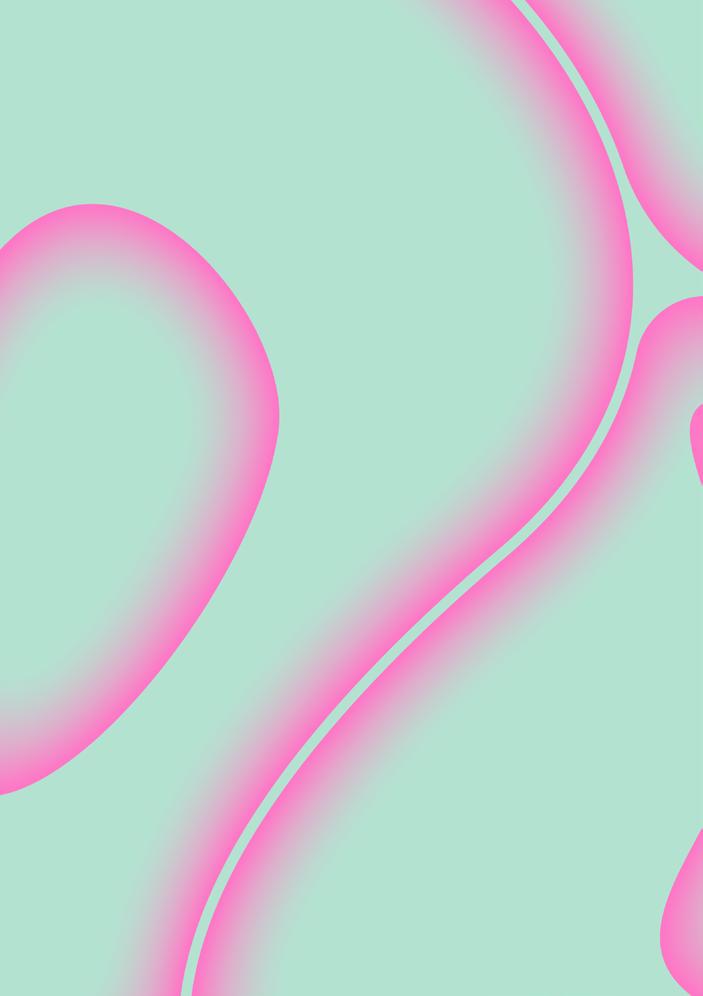Cèl·lula n.5



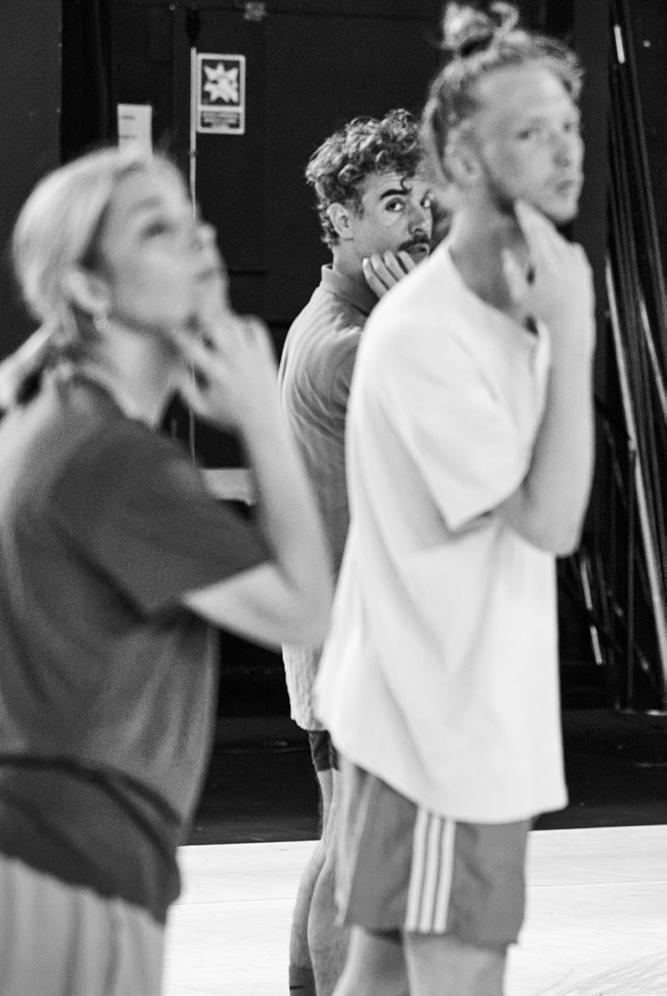

Cèl·lula emerges as an embryonic project for the production, creation and transmission of dance within the structure of the Mercat de les Flors.
The objective of this initiative is to make possible the creation of medium- and large-format works by choreographers who are at the point of maturity and interest in deploying their talent and their aesthetic universe in this stage format. Cèl·lula thus supports large-scale creation, transmission and circulation of knowledge within the professional community.
This project, developed by the Mercat de les Flors between 2018 and 2024, has placed the artist at the heart of the Mercat de les Flors project, a necessary positioning to improve the quality of the creations.
One of the objectives of this project is to give greater support and accompaniment to artists and to improve working conditions.
The Cèl·lula project has been able to generate large-scale stage formats and provide opportunities for local talent to grow.
So far, there have been 11 laboratories and four Cèl·lula productions, with Albert Quesada, with Pere Faura / La Diürna, with Guy Nader and Maria Campos and with Núria Guiu. This year we asked Paloma Muñoz to create a production within the framework of Cèl·lula.
Cèl·lula is a flexible structure for the creation, transmission, continuous training and development of dance; it invites and welcomes choreographers, dancers, creators and artists working around dance, choreography, body and movement.
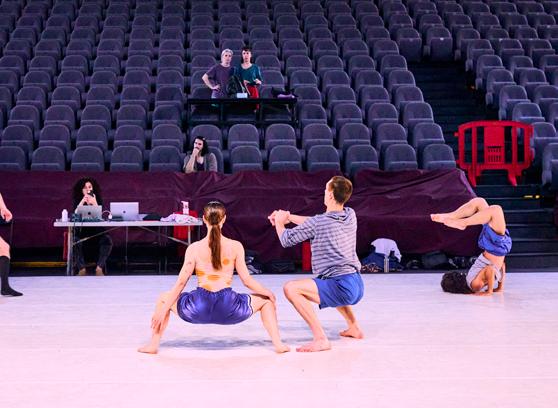
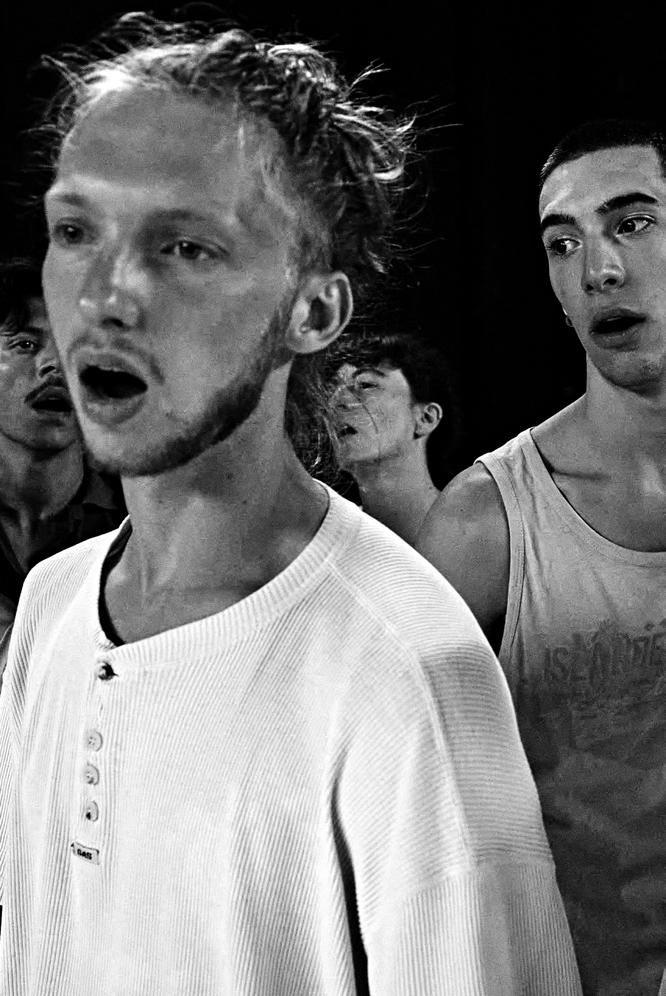

Paloma Muñoz is one of the creators who, in recent years, has found her place on the international contemporary dance scene, with a recognisable identity in her demanding physical work and careful aesthetics.
After her graduation piece at the Institut del Teatre, La Piel Vacía (2018), with which she made her way through professional theatres here and abroad, she worked on her own projects and for other international companies in Switzerland, Italy and Germany, where in 2022 she received important recognition. In Barcelona she has continued her personal search, always located between craftsmanship and technique, that is to say, between the worked form and the
vibration it emanates. For these journeys, she requires precise bodies with which she can go back and forth from one image to its rupture, and from there to a new concretion, infinitely.
But the comings and goings of Paloma Muñoz do not make her lose sight of where she comes from: a little village in Extremadura, a “black hole (in which there is light at the bottom) which is the space occupied by my village”. It is from there that she takes the name of her company, and from its traditions she has drawn material for her latest piece, La Quijá, where she takes up the most intimate search for language, which needs to be used and validated between bodies that meet to express themselves, to feel, to complain.
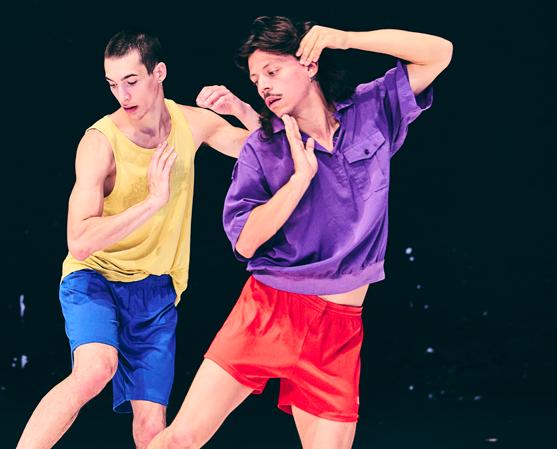
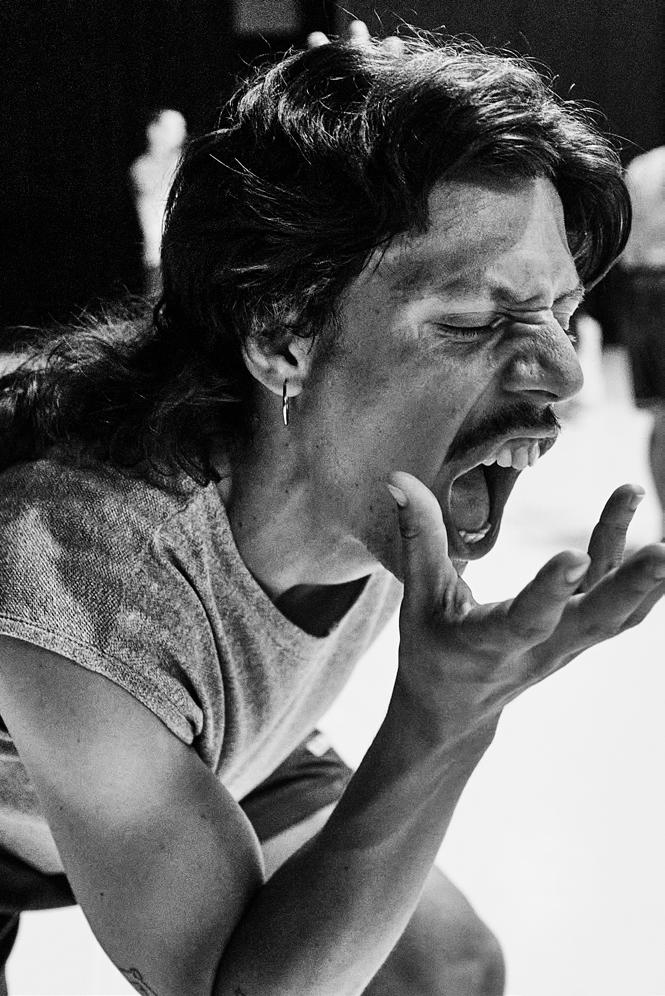

The starting point of the new Cèl·lula project, La Quijá, is the image of a stark, dry, devastated landscape, as well as a need to return to the source and to the body as the creative power in a quest to discover poetry in moving bodies. It is a journey inward, to the substance that resides inside the bones, and, as such, dance from the very core, returning to the body, not only as an individual, but also as a collective in search of a personal and shared encounter.
Choreographer and dancer Paloma Muñoz has worked with companies, such as IT Dansa, Metros, Ramón Oller, Thomas Noone Dance and Norrdans, and also has her own company, Siberia. She also develops audiovisual projects ranging from video dance to film choreography.
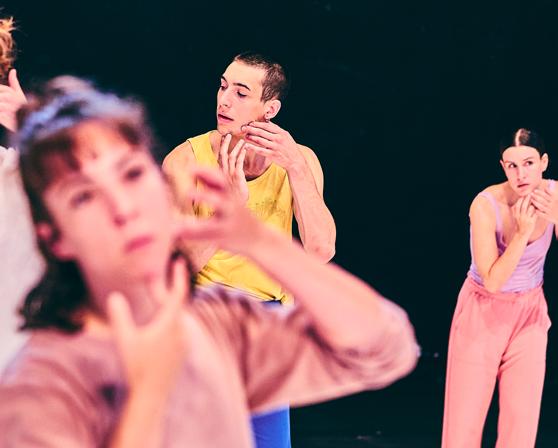

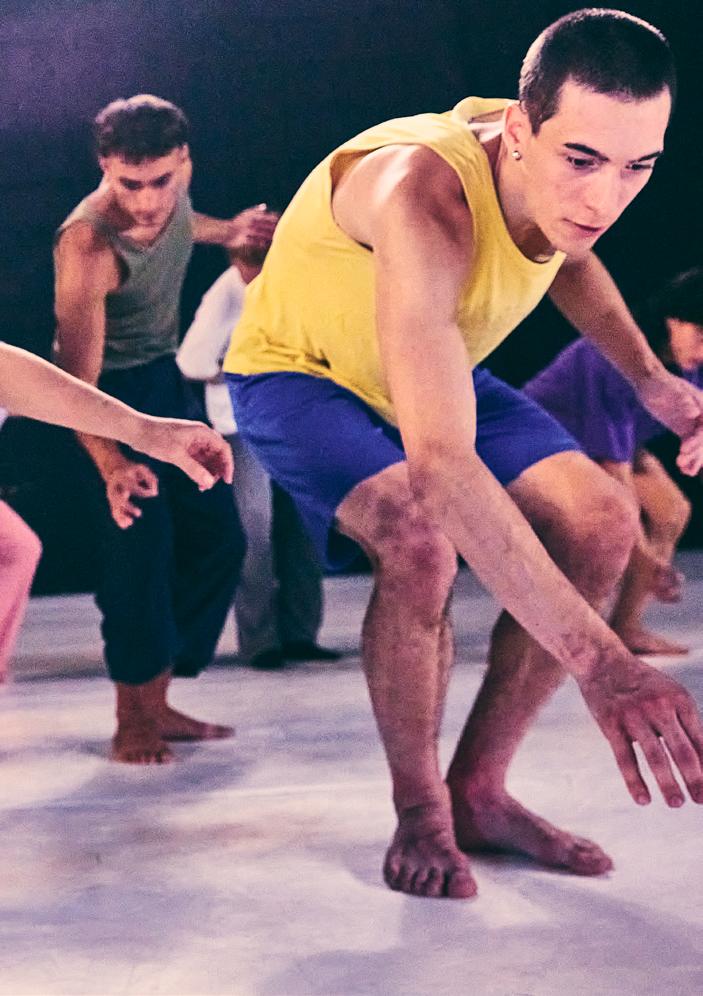
From October 3 to 7, 2024
What is most important to you about being part of the Cèl·lula project at Mercat de les Flors?
The chance to focus on the artistic process and to work with a large number of dancers in a calm atmosphere, knowing that they are being looked after. I’ve had similar experiences with other companies in Europe, but with less time.
You’ve always had a penchant for group work. Could you talk about that?
Yes, I did a solo once and that was enough. I like being around people, sharing, laughing. I think it’s partly because I was a gymnast when I was little and competed in a team. I told my psychologist the other day that I feel like a sponge, filtering energies to understand what each person needs and to bring out the best in them. And I love that.
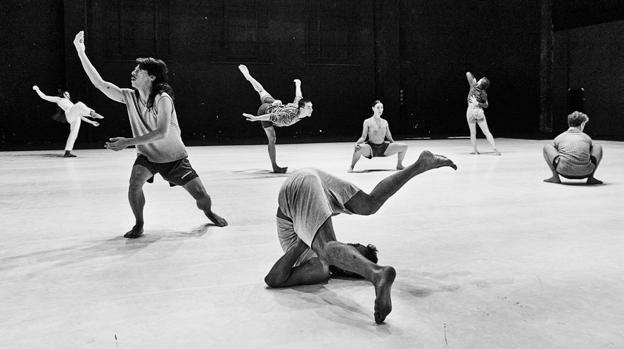
Now you’re working with Niño de Elche. How did this come about?
We met at a C. Tangana concert and immediately connected. He came to mind later on because of his podcast Estranyes Heterodòxies, where he talks about the interplay between seemingly distant concepts. I told him about my research into the cavities of bones, where the echoes of images and memories are hidden. He suggested a vocal piece, a taller d’aires as he called it, which tied in nicely with a project I’d been developing for some time with Guillem Llotje to extend the physical and choreography into the realm of sound.
I’ve read that you want to return to the body. Have you ever left the body?
In a sense, yes. L.E.V.E. (2022) focused on lightness, culminating in a sequence where the dancers just ran. I wanted to return to the craftsmanship of movement that characterised my first piece, La Piel Vacía (2018). This return evokes the landscape of my upbringing, the desert of Siberia. It is the perfect place for the body to shine – just by being there the body becomes graphic and transforms the space because there is nothing else.
Which desert is this?
It’s the desert of La Serena, near my village in Extremadura. I go there every year during the Tears of Saint Lawrence. I drive along until I come to a crossroads and park the car there, in the middle of the road. I set up my hammock and blankets, lie down and watch the stars fall around me. It’s an immense feeling of nothingness and self-connectedness.
Hence the name of your company, Siberia. But Siberia is also part of Russia, and Rússia is a piece by La Veronal. Do you feel a kinship with Marcos Morau’s company?
He is an undeniable inspiration. When I saw Rússia (2011) I was shattered. That aesthetic sense and dissociation from the body... I think it influenced my whole generation. Marcos also likes rhythmic gymnastics and when we meet we don’t talk about dance, we talk about rhythmic gymnastics.
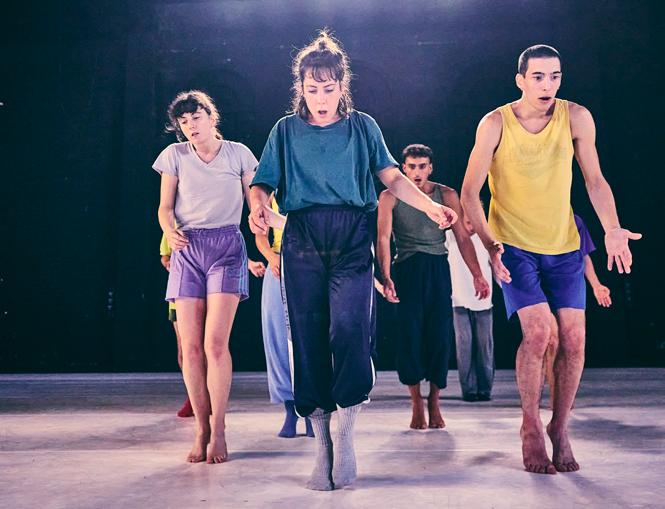

The air that sharpens the thistles, crashes in the grooves and shakes the stones – a sound is heard. A desert is a great throat.
What remains of the bodies is their first line, embroidered in white and surprised to be able to move. The dust cradles them and they touch their faces because they don’t recognise them, and the hollows are struck as if knocking on a door. They say: here is the shared root. They say: inside what’s inside one must find cleanliness, a choir, a light, the blade of a knife, pointing to the sky with the bone of the mouth and make it crunch.


There are bent, crooked but strong quijás that are the first to say goodbye because they know where they are going.
There’s music we don’t see, but to which we dance like zombies in the early hours.
There is a thorn in every memory, but also its flower.
This is Paloma’s La Quijá. All we have to do is follow her, trusting that she will eventually grip us tight, take us in and never let go as she dances, laughs and enlightens us.
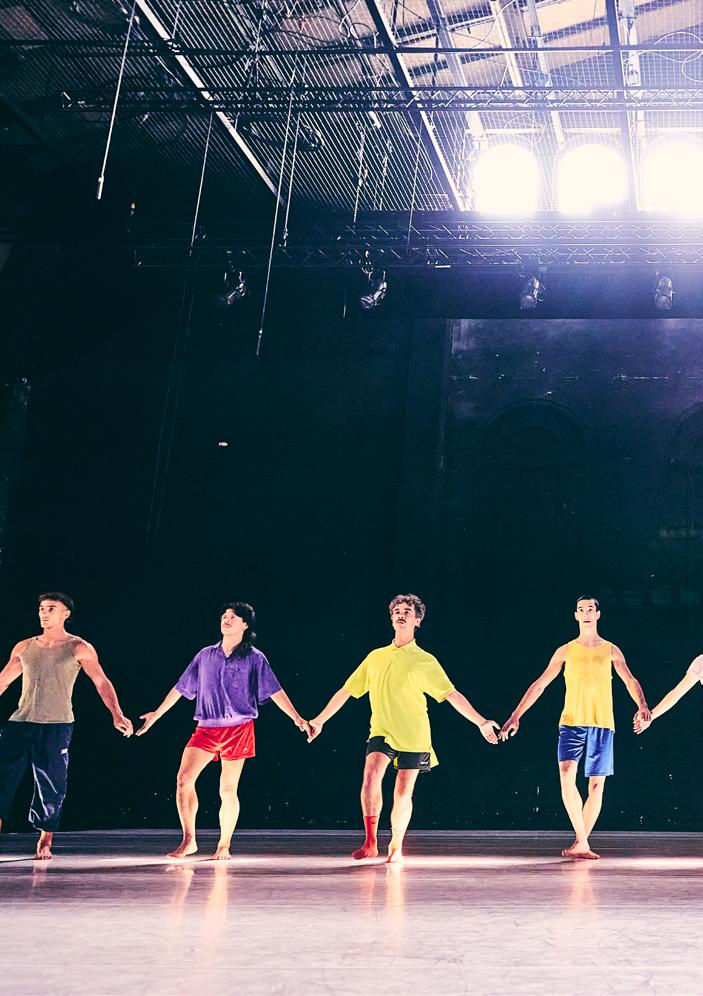
Direction and choreography
Paloma Muñoz
Dancers
Alejandro Fuster, Blanca Tolsá, Amanda Rubio (repetidora), Edoardo Brovardi, Wilchaan Roy, Jacob Gómez, Joan Ferré, Marta Santacatalina, Paula Parra, Lara Misó
Sound-space design
Alejandro da Rocha
Collaboration sound-space creating Ramon Balaguer
Stage space design
CUBE bz.
Costume design
Miguel Peñaranda
Assistant director Muntsa Roca
Artistic voice accompaniment Paco Contreras (Niño de Elche)
Costume assistant
Andrea Verbel
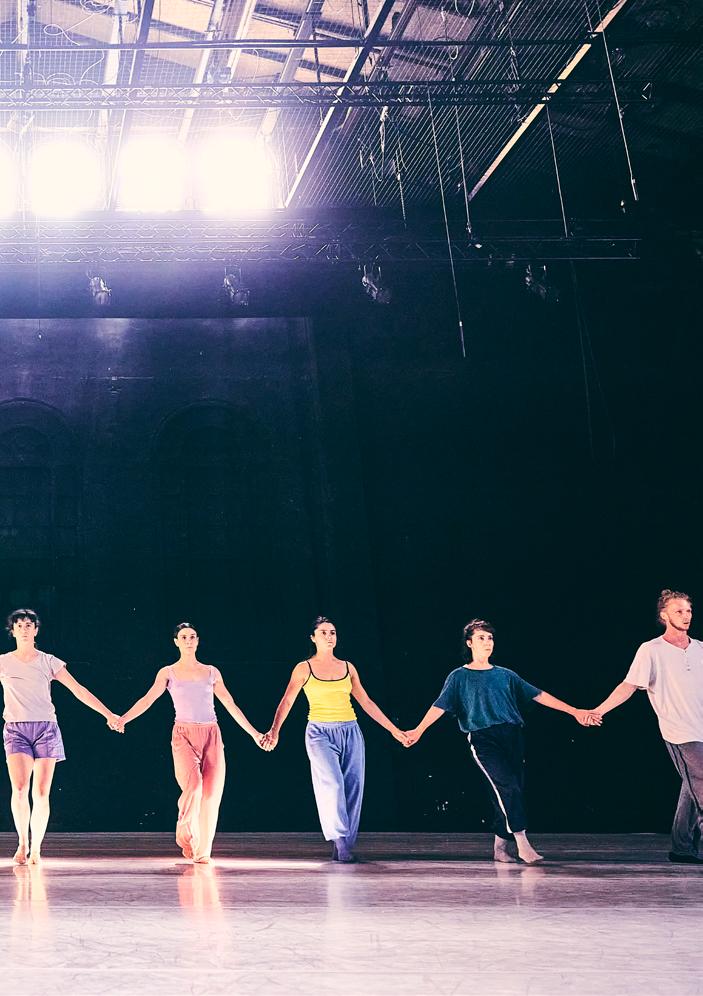
Direct sound design
Rodrigo Rammsy
Texts
Juan Carlos Panduro Mercat de les Flors’ own production
With the production, communication, administration, content and project support teams.
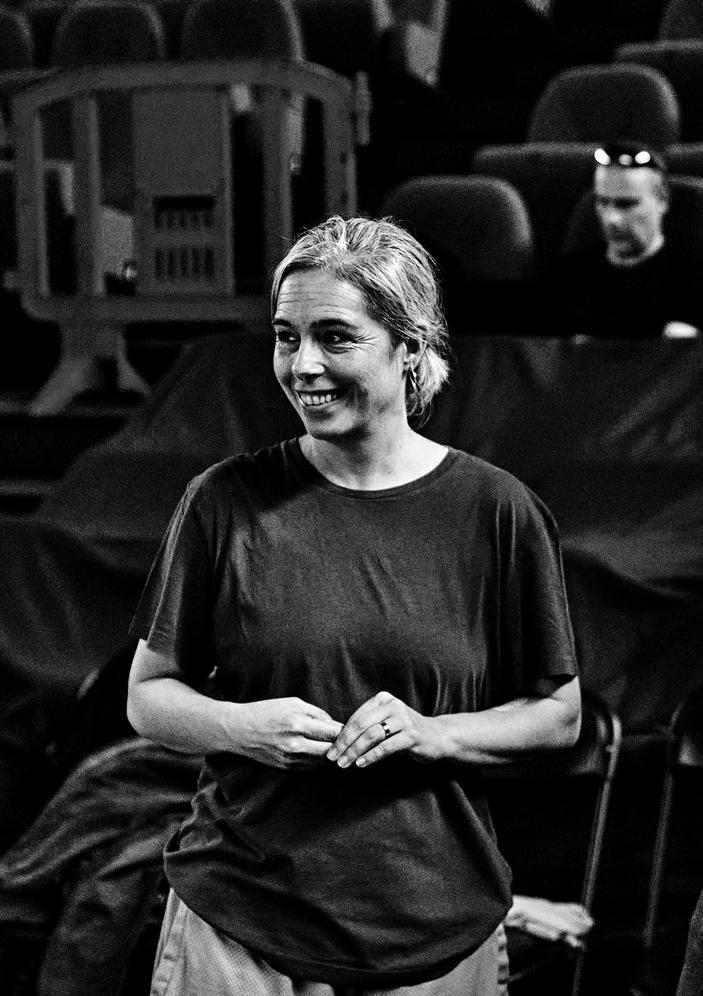
PALOMA MUÑOZ
Choreographer and dancer from Extremadura living in Barcelona. A graduate of Choreography and Performance from the Conservatori Superior del Institut del Teatre de Barcelona, as a dancer she has worked at IT Dansa, Metros, Ramón Oller, Thomas Noone Dance and Norrdans.
In 2016 she started her own company project under the name Siberia with the short piece La Piel Vacía, finalist in the Premi de Dansa del Institut del Teatre. The piece was awarded prizes in different choreography competitions including the Certamen Coreográfico de Madrid and the CICC Copenhagen International Choreography Competition. In 2018, the full-length version of La Piel Vacía premièred at Sat Teatre. In 2020 La Piel Vacía entered the Swedish circuit DancenetSweden and the company began touring internationally. In 2022 Paloma won the Bern Dance Award at the Tanzplattform Bern for La Piel Vacía.
With Siberia we have produced several site-specific (Blackpool for CaixaForum and Stone & Silk for Montjuïc Castle) and theatre pieces. In March 2021, L.E.V.E., a Light and Easy Vanishing Event premièred at the Teatre Auditori Sant Cugat co-produced by La Quinzena Metropolitana de la Dansa. In 2022 the work was performed at the Mercat de les Flors and the Madrid en Danza festival. Paloma currently combines her work with Siberia with freelance work as a choreographer for European companies. In March ‘23 she premièred The Station for the Theater Münster. In June ‹23 she premièred Sentient for the Ballet Bern. In January ‘24 she premièred Ardo, Tiemblo in an evening shared with choreographer Caroline Finn about the universe of Virginia Woolf in a production by the Ballet Bern called Virginia’s House. Siberia is currently working on a new production, La Quijá, produced by Mercat de les Flors as part of the Cèl·lula project. Première on 3 October 2024. Next season 24/25 she is guest choreographer for Tanz Bielefeld (Germany).
As a teacher, Paloma has taught classes, workshops and laboratories at: Danza 180°, Madrid; Institut del Teatre, Barcelona; IEA Oriol Martorell, Barcelona; IAB Sitges; Espai LaGranja, Valencia, and D.A.F. Dance Arts Faculty, in Rome.

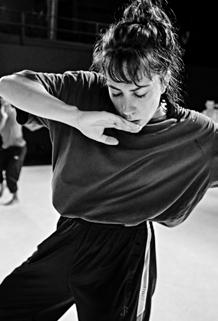
AMANDA RUBIO is a choreographer, performer and graduate of the Institut del Teatre. She has worked in several companies, such as LAVA at Auditorio de Tenerife, Aviaja Dance Company, Compañía de Danza Javier Guerrero, Zappalá Danza and Paloma Muñoz’s Siberia. She currently works as a performer and assistant director for both the Danish company Aviaja and Siberia in Barcelona. Her latest works have been performed for Bühnen Bern, Oslo Ice Hot Festival, Dansekapellet Copenhagen, Nunatta Isiginnaartitsisarfia in Greenland, Tanz Bielefeld and this new Cèl·lula with Paloma Muñoz.

EDOARDO BROVARDI is an Italian freelance dancer. His career is notable for his participation in various productions and dance companies. Recently, he has collaborated with renowned companies such as KOR’SIA in the productions Mont Ventoux and Tennis Igra, as well as working with Aterballetto in Yes, Yes and with Diego Tortelli in GF Reloaded. He has also been part of projects such as Prelude with Mario Enrico de Angelo, How to Do Things with Words with Joshua Monten and Lascaux with Stefania Ballone and MILANoLTRE Festival. Edoardo was a member of the DanceHaus company until 2022, exploring the interaction between body and movement to connect with the human essence and its roots.
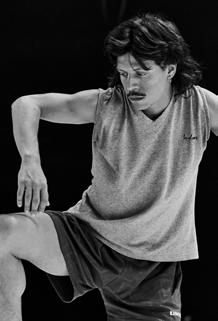
JOAN FERRÉ graduated from Codarts University in Rotterdam in 2016. He worked with contemporary dance companies in Switzerland, Germany, the Netherlands and Belgium until he decided to return to Barcelona. He won the award for best performer at the Institut del Teatre Dance Awards in 2021 with the Unaiuna company, with which he is still working. In Barcelona he also works with Aimar Pérez Galí on his latest production Alba and on the children’s piece dit dit. He continues to perform in the pieces Pharsalia by Antonio Ruz, Europa by Sharon Fridman and HamâIká by Igor Calonge.

ALEJANDRO FUSTER began his career as a dancer at the Angela Bruno Dance Factory Academy in Majorca after some years of theatre and circus. At the age of 18 he began his studies at Codarts Rotterdam and worked for two years at Konzert Theater Bern. After qualifying, he moved to Lyon to join the company CCNR Yuval Pick and after a couple of years started working with different choreographers while starting in the world of performance as Loli Pamboli, his drag persona. He is currently working with SineQuaNonArt in France and Paloma Muñoz in Barcelona.
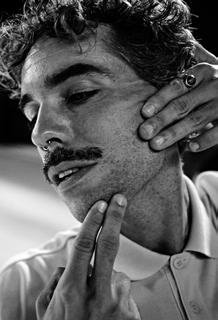
JACOB GÓMEZ studied at the Conservatorio Profesional de Danza de Valencia and in 2013 he graduated from the Institut del Teatre and joined the young company IT Dansa. In 2016, he started working with the German company Staatstheater Pforzheim and in 2017 as a soloist at the Theater Bielefeld. In 2018 he joined the Kibbutz Contemporary Dance Company in Israel. In 2020 he returned to Europe and began working with Paloma Muñoz, Raquel Klein and Vero Cendoya, among others. That same year he received the Butaca award for best dancer in Catalonia. Jacob Gómez also has his own dance company, with which he has received various national and international awards. He has choreographed for companies such as Theater Bielefeld, Cobosmika or VDF, and some of his pieces, such as Meohadim, Rara Avis and Quema, are still touring.

LARA MISÓ studied at the dance conservatories of Granada, Madrid and Valencia, where she did her degree in Higher Artistic Dance Education; she also studied at the Rudra Béjart School (Lausanne/Switzerland). She has worked for the companies Transit Dansa, IT Dansa and Hessisches Staatsballet Wiesbaden. She currently works as a freelance with Siberia/Paloma Muñoz, Marina Miguélez, Tangen/Benzal, Taulant Shehu, Taiat Danza and Jacob Gómez. She is a choreographer and performer with Colectivo Sin Par.

PAULA PARRA trained at the Conservatorio Profesional de Danza de Granada, the Centro Andaluz de Danza de Sevilla and the Conservatorio Superior de Danza María de Ávila in Madrid. She began her career in the company Dantzaz and continued as a freelance dancer with companies such as AiDo Project - Iker Arrue and Bialy Teatr Tańca. She spent five years at LASALA, a company directed by Judith Argomaniz, and has participated in several works by the company NODE. She was part of LAVA, dance company of the Auditorio de Tenerife directed by Daniel Abreu in the 2019/20 season. Currently, she continues her career as a freelance dancer based in Donosti and works on projects for the companies EYAS Dance Project in Madrid and Paloma Muñoz - Siberia in Barcelona.

WILCHAAN ROY, born in France, studied at Codarts (Rotterdam) before working as a freelancer with different creations and projects, such as Fortune with the company Club Guy&Roni, Razor with the dance project LaSADCUM, Score by Isaiah Wilson and as second cast member of the RIDCC-winning duet Megastructure by Sarah Baltzinger and Isaiah Wilson.
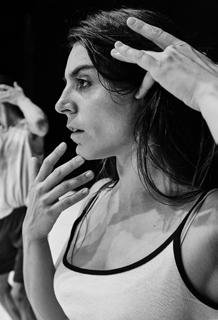
MARTA SANTACATALINA graduated from the Institut del Teatre’s CPD specialising in Contemporary Dance in 2018 and in Journalism from the UAB in 2023. She complemented her training in the GoOD Project by the company Otra Danza, marking her entry to the professional world. She has worked with choreographers and directors such as Paloma Muñoz, Sol Picó, Paula Serrano, Antonio Ruz, La Intrusa, Feike Santbergen and Asun Noales at OtraDanza, the Valencian Institute of Culture and the Ballet Joven de la Generalitat Valenciana. She also trains and works in the discipline of vertical dance in Samuel Delgado’s company Sacude. As a choreographer, she created S-end, together with Tanit Cobas, and Hoy Llueve Mañana Yegua; and co-directed with Aina Palomer the docufiction El dia de l’espectador.

BLANCA TOLSÁ became a dancer in IT Dansa, the Institut del Teatre’s young dance company, with which she toured internationally. She has worked with Lipi Hernández, Ariadna Montfort, Zappalà Compagnia and Raquel Klein in Wu Wei, for which she received the Butaca 2020 Award for best female performer. She was part of Mercat de les Flors’ Cèl·lula #1 production with the piece Flamingos by Albert Quesada. Since 2019 she has been researching the intuitive associations between abstract voice and movement. This was the inspiration behind her first piece, Ecoica, which prepremièred at Corpografías#7, La Caldera, and finally premièred at the Festival Dansa Metropolitana 2022, which also produced it. She currently works as a performer for choreographers such as Núria Guiu (Supermedium, Cèl·lula #4), Georgia Vardarou, Paloma Muñoz–Siberia and Constanza Brnčić, among others.
ALEJANDRO DA ROCHA. Sound space design. Producer, composer and sound artist, he has worked for dance and theatre companies such as Nederlands Dans Theater (NL), Hessisches Staatsballett (DE), Ballet de l’Opéra Grand Avignon (FR), Kor’sia, Richard Mascherin and LaSADCUM, among others. Trained in Fine Arts, when he began to develop his own sound and directed his career towards musical production and composition, he created his individual project DA ROCHA UM, with which he has performed at festivals and venues such as Electrónica en Abril (Madrid), Razzmatazz (Barcelona), Curtocircuito (Santiago de Compostela) and CCCB (Barcelona).
CUBE.BZ. Stage space design. Trained in visual arts, theatre and architecture, their work is characterised by constant research in the fields of light, space and the objects that occupy it through the transgressive attitude that involves situating themselves at the limits of para-theatricality. They have worked, among others, with General Elèctrica, Frederic Amat, Societat Doctor Alonso, Àlex Rigola, Marcel·lí Antunez, Constanza Brcnic, Augustí Fernández, Albert Pla, Standstill, La Fura dels Baus, Señor Serrano, Mal Pelo, Silvia Pérez Cruz, Los Corderos, Cabo San Roque, Sol Picó, Maria Arnal and Marcel Bagès, Rosalía...
MIGUEL PEÑARANDA. Costume design. He currently works in Brussels as a costume designer for the performing arts, specialising in contemporary dance. He has also worked as dramaturgical adviser and artistic director on various performance projects. He has collaborated with Eastman, Sidi Larbi Cherkaoui, Nationale Theater Den Haag, Zeelandia, Comédie Française, Compagnie Thor, and independent choreographers such as Marco Torrice, Francesca Chiodi Lantini, Richard Mascherin, Carolina Mendonça, and Reinaldo Ribeiro. He is currently working with Spanish artists such as Vicente Navarro, Niño de Elche and Paloma Muñoz, among others.
NIÑO DE ELCHE. Artistic voice accompaniment. Francisco Contreras, “Niño de Elche”, is an undisciplined ex-flamenco artist who has united genres such as flamenco, improvisation, Krautrock and electronic with poetry, performance, dance and theatre. With more than 16 recorded works, he has collaborated with artists such as Raúl Refree, Miguel Alvarez-Fernández, Xabier Erkizia, Pedro G. Romero, Ramón Andrés, Lois Patiño, Meridian Brothers, Ernesto Artillo, Los Planetas, Rosalía and C. Tangana. Within the performing arts he has collaborated with Israel Galván, Angélical Liddell, Rocío Molina and María Muñoz. He has also starred in films and published five books, including essays and autobiographical collections of poems. He produced Auto Sacramental Invisible, a sound installation based on Val del Omar for the Reina Sofía Museum Collection. He directs and presents the weekly podcast eXtrañas heterodoXias on Spain’s Radio 3.
JUAN CARLOS PANDURO. Texts. A circus artist and poet from Extremadura, he trained at L’École Superiéure des Arts du Cirque in Brussels and did a master’s degree in poetic writing “La inspiración y la palabra” at the Escuela de Escritores de Madrid. In February 2024 he published his first book, Romero recién cortao (Letraversal). A few months later, Estrellas vivas. Antología de poesía cursi (Letraversal) was published, which includes a poem by Juan Carlos. Very interested in the search for his own language, poetic composition and the limits of the body, he is currently part of the cast of the piece Thauma by La Mula and is in the process of creating his first stage solo El patio, which has been pre-selected for Circus Next 2025.

